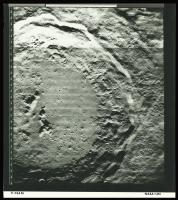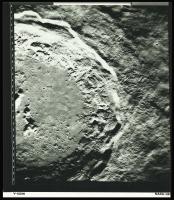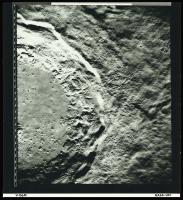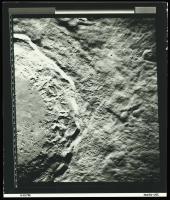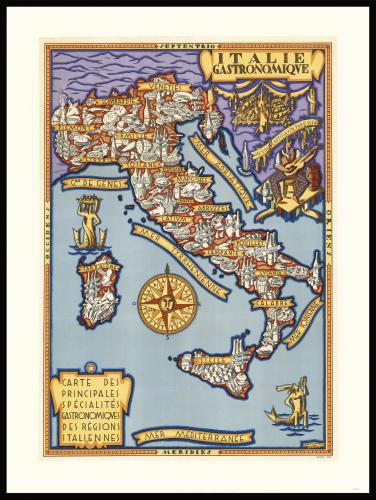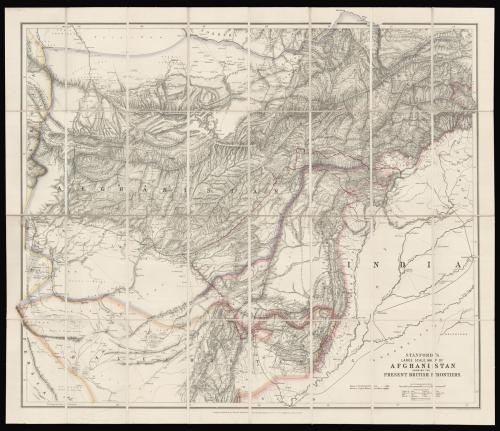
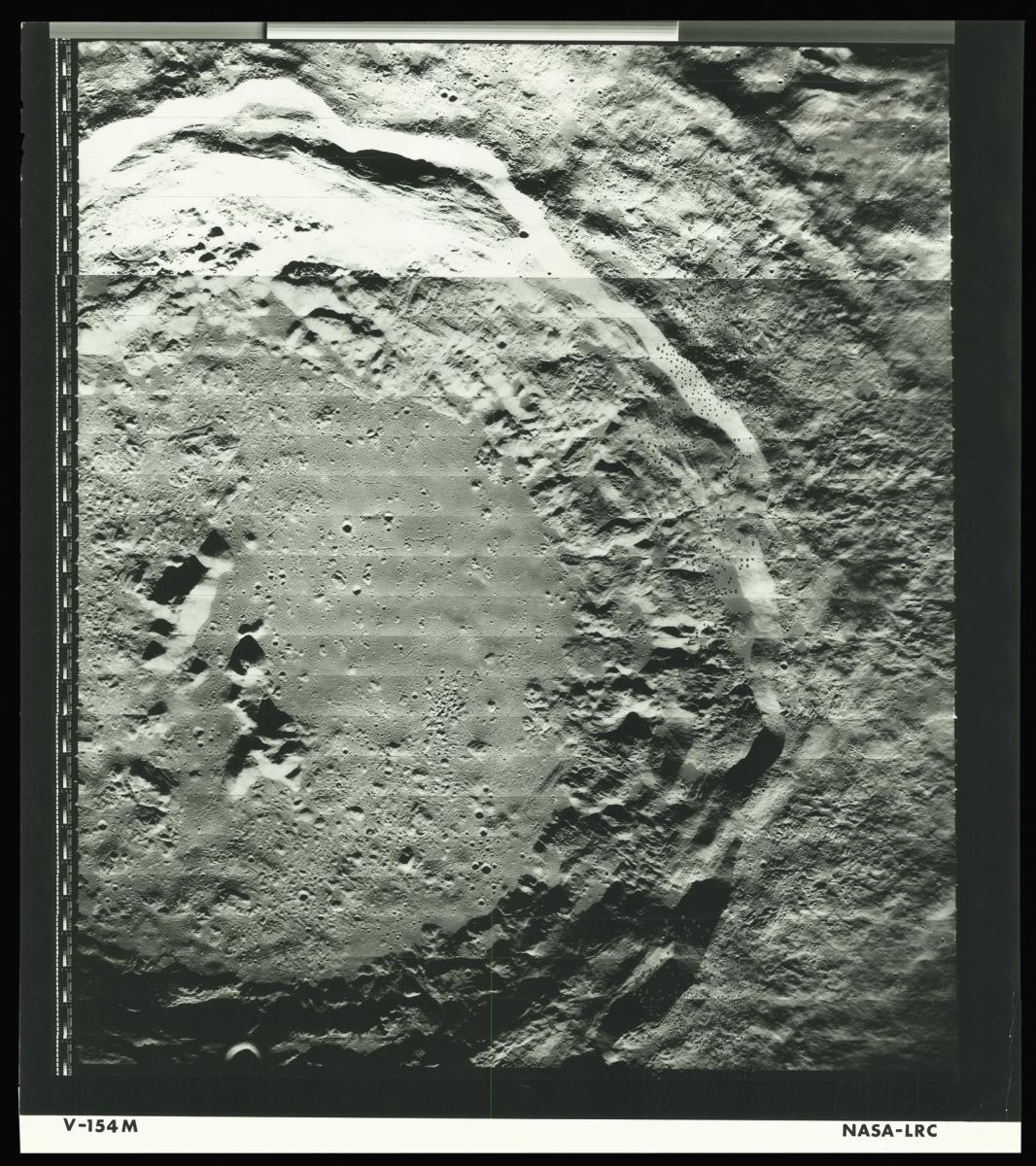
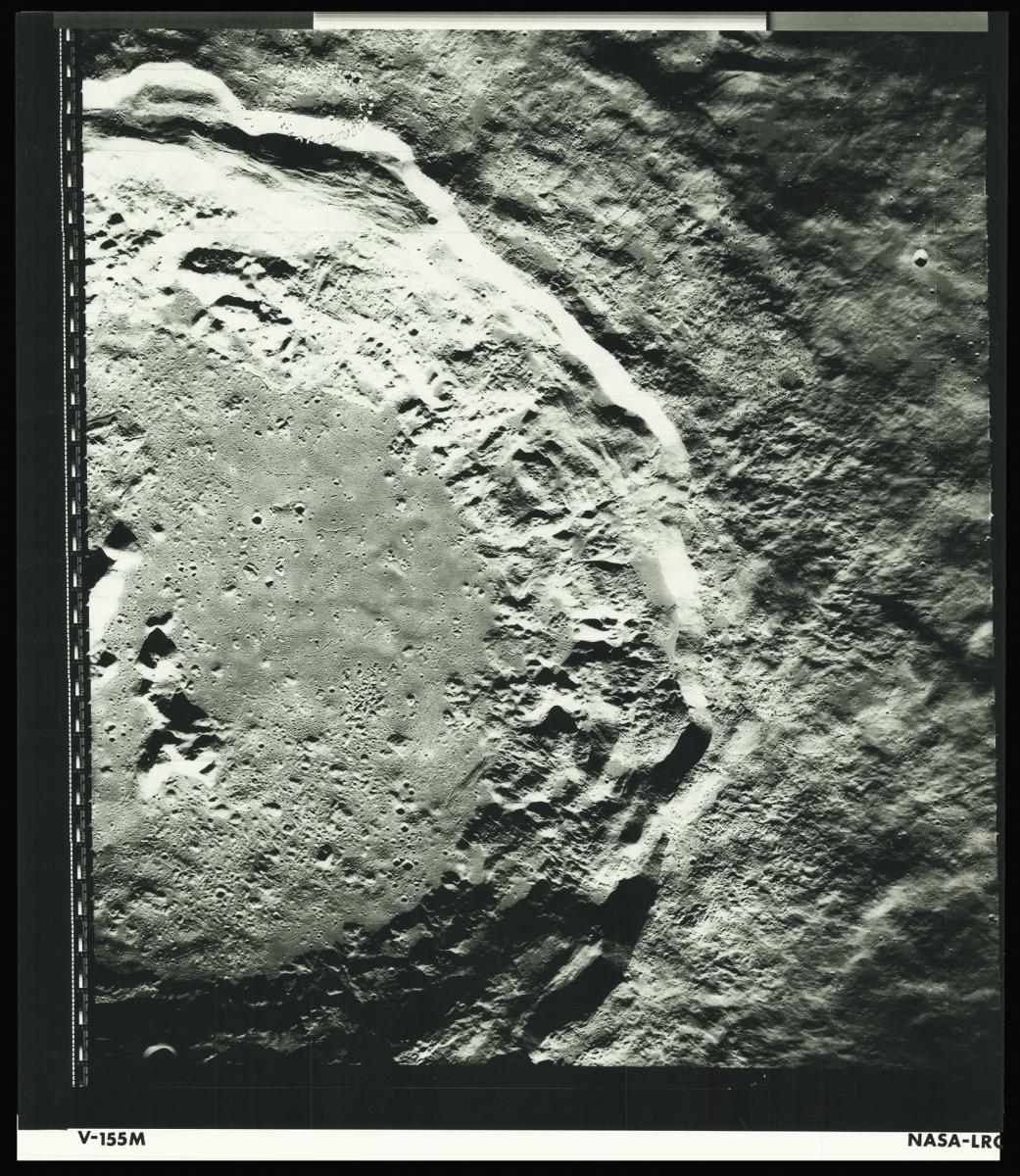
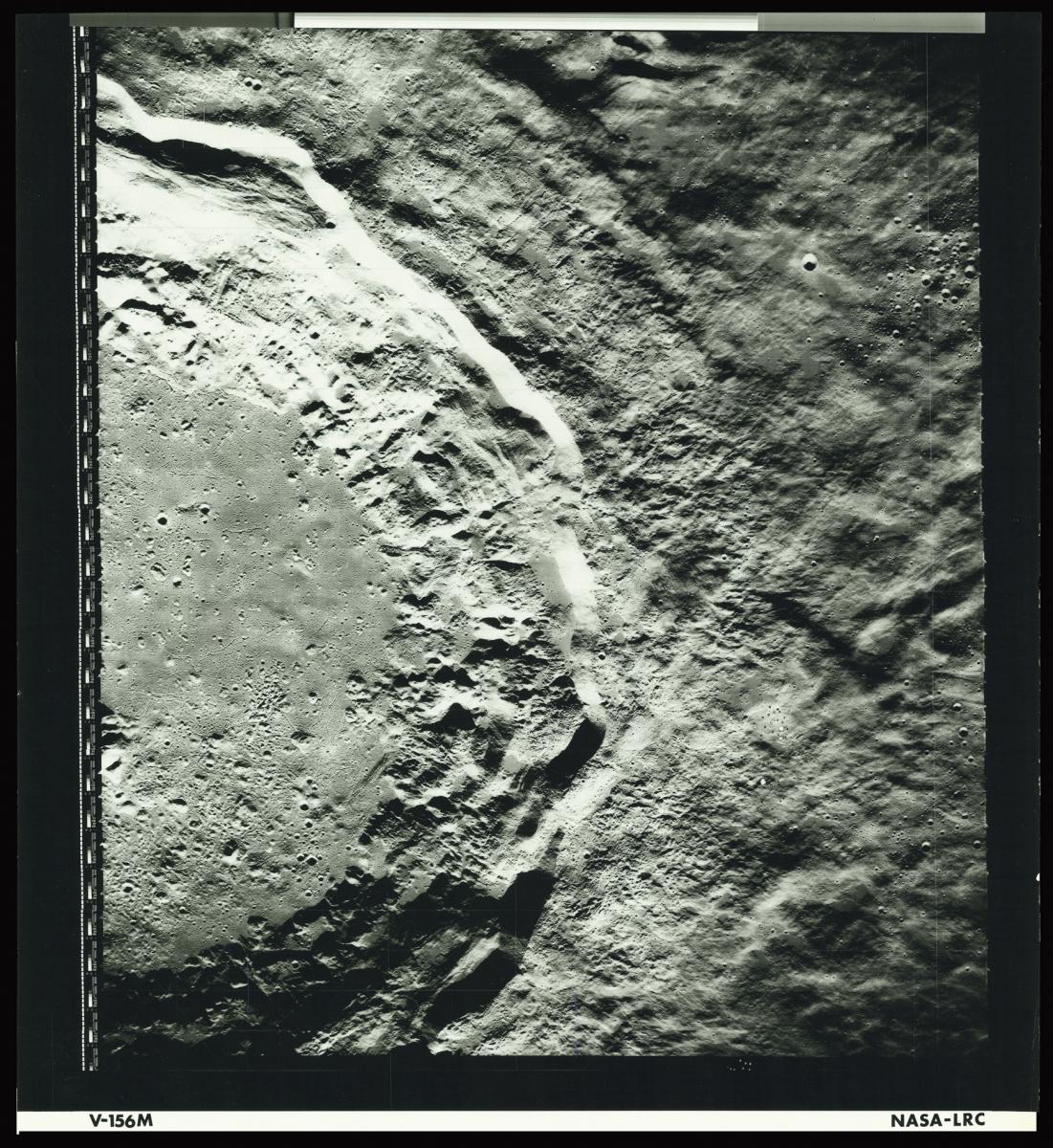
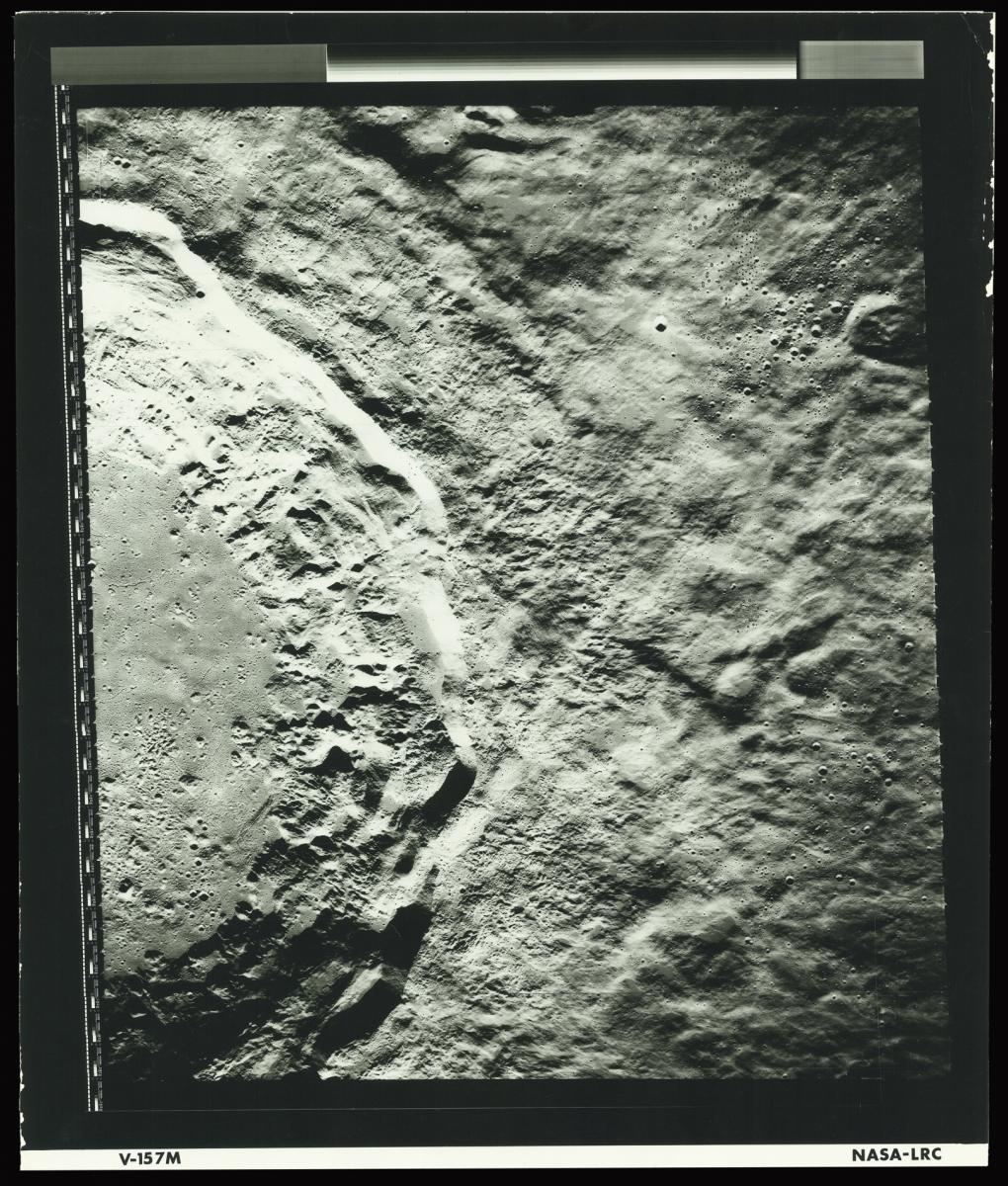
Price
£8000.00This object is eligible for a Certificate of BADA Provenance
The BADA Standard
- Since 1918, BADA has been the leading association for the antiques and fine art trade
- Members are elected for their knowledge, integrity and quality of stock
- Our clients are protected by BADA’s code of conduct
- Our dealers’ membership is reviewed and renewed annually
- Bada.org is a non-profit site: clients deal directly with members and they pay no hidden fees
Set of four Lunar Orbiter V Photographs of the Crater Copernicus
Publication place: [Hampton
Publisher: NASA, Langley Research Centre
Publication date: 1967].
Physical description: Set of four silver gelatin prints.
Set of four images of Crater Copernicus taken by Lunar Orbiter V.
Notes
The Lunar Orbiter program was a series of five unmanned lunar orbiter missions launched by the United States from 1966 through 1967. Intended to help select Apollo landing sites by mapping the Moon’s surface, they provided the first photographs from lunar orbit.
The spacecraft carried 70mm photographic film which was developed automatically in lunar orbit aboard the spacecraft. The developed film was then scanned with a light beam and this modulated a signal which was sent back to Earth. Each image was then archived on analog data tape and printed out as photographs for use by the Lunar Orbiter analysis team.
All five missions were successful, and 99% of the Moon was mapped from photographs taken with a resolution of 60 meters or better. The first three missions were dedicated to imaging 20 potential manned lunar landing sites, selected based on Earth-based observations. These were flown at low inclination orbits.
The fourth and fifth missions were devoted to broader scientific objectives and were flown in high-altitude polar orbits. Lunar Orbiter 4 photographed the entire nearside and 9% of the far side, and Lunar Orbiter 5 completed the far side coverage and acquired medium (20 meters) and high (2 meters) resolution images of 36 pre-selected areas.
The set of four images (labelled V ‑154M to V — 157M) provides an overview of the interior of Copernicus. The prominent structures near the centre of the images are the central peaks, which are common in craters of this size. Some consideration was given to having an Apollo mission land to the north of the central peaks with the objective of sampling one of the peaks, which may be material thrust up from deep in the Moon’s crust.
The crater Copernicus, 93 kilometers in diameter, is one of the most prominent features on the Moon’s nearside. It is a relatively fresh crater, believed to have formed — in the Copernican Period — less than 1 billion years ago. Its system of bright rays is quite prominent at full Moon, with he crater rays spreading some 800 km across the surrounding lunar mare.
The crater is named after the astronomer Nicolaus Copernicus. Like many of the craters on the Moon’s near side, it was given its name by Giovanni Riccioli, whose 1651 nomenclature system has become standardised. Riccioli awarded Copernicus a prominent crater despite the fact that, as an Italian Jesuit, he conformed with church doctrine in publicly opposing Copernicus’s heliocentric system.
Riccioli justified the name by noting that he had symbolically thrown all the heliocentrist astronomers into the Ocean of Storms. However, astronomical historian Ewan Whitaker suspects that the prominence of Copernicus crater is a sign that Riccioli secretly supported the heliocentric system and was ensuring that Nicolaus Copernicus would receive a worthy legacy for future generations.
Dimensions
(each) 510 by 430mm. (20 by 17 inches).Stock number
3167The BADA Standard
- Since 1918, BADA has been the leading association for the antiques and fine art trade
- Members are elected for their knowledge, integrity and quality of stock
- Our clients are protected by BADA’s code of conduct
- Our dealers’ membership is reviewed and renewed annually
- Bada.org is a non-profit site: clients deal directly with members and they pay no hidden fees


